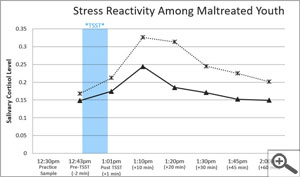Drop Date: June 2019
Better Methods: Saliva Collection Basics #1 – Collect More Samples
In This Drop: Better Methods: Saliva Collection Basics #1 – Collect More Samples
Better Methods is a new, multi-part series highlighting ‘best practice’ methods in salivary bioscience that can have a positive impact on the quality and reproducibility of salivary bioscience research.
More is Better
It’s common for researchers to design their saliva sample collection plan based on what they can afford to test in their study budget. The number of samples collected, and the volume collected from each participant are typically dependent on study design and the analytes being considered for measurement. For most researchers, every sample that is collected is used for analyte measurements, leading the researcher to believe this practice is the best practice; however, this is not the case. Once collected, all samples need not be tested right away, and researchers can benefit from having additional samples available. Collecting more samples is an often overlooked, easy and affordable way for researchers to increase the quality of their research study without substantially impacting their budget.
Small Cost – High Value
The actual cost of collecting samples is very small compared to the other costs in a salivary bioscience research study. Typically, the effort and expense of study design, organization, recruitment of participants, coordination and sample collection logistics in the field and in the lab are the most expensive part of a study. Depending on the study design, sample analysis in a qualified saliva lab is the next significant expense. While the expenses associated with these two parts are largely dependent on the number of participants and the participant requirements in the study design; the cost of additional sample collection will mostly be the cost of additional saliva collection materials. In just about every grant, this is an insignificant cost to the study. This low cost compares to the high value these extra samples may bring to a researcher: (1) by improving participant compliance; (2) by providing the opportunity to overcome limitations in a study; and (3) by offering the researcher a best practice method to expand their findings with a new, cost effective grant. It is often efficient and effective to collect more saliva samples than needed for the primary study’s purpose.
Improve Compliance
Practice increases participant compliance. Participants are often new to saliva collection and can struggle with following unfamiliar protocols, no matter how well they have been given instructions. Combined with the anxiety associated with performing in front of a researcher or assistant, saliva collection can be challenging for some individuals. Providing practice samples can reduce participant performance anxiety and increase the level of comfort with the saliva collection devices. This helps participants generate more sample volumes, and more importantly, often makes it possible to get meaningful samples from the few participants who may struggle and otherwise not be able to provide sample volumes above the minimum volume required for analysis. The practice sample, while primarily used to improve participant compliance, may also be used as an extra sample to be tested and provide additional data at a later time.
Overcome Limitations
Do not wait to find out you need more data. Extra samples provide flexibility when it comes time to do sample analysis. In many cases, collecting extra samples per participant enables researchers to go back and test these samples to examine finite individual changes and/or patterns using multilevel modeling, modeling which may provide the additional stability needed to develop a robust conclusion. This data also affords the opportunity to assess patterns across multiple days/time points which would not be possible from a smaller sample set. During final analysis, a researcher may find that certain observations need additional data to overcome limitations. Having these extra samples available to be tested can provide supplemental data which may make it possible to strengthen the researchers’ findings. Additionally, collected samples on-hand give the researcher opportunities they otherwise wouldn’t have.
Bank the Samples for Future Research
Future research can leverage your current study. Since sample collection is a minor expense of the overall budget, the original samples and these extra samples can be biobanked for years. This is a great value because just as assays for new analytes in saliva have emerged in the past decade, more and more assays for analytes in saliva are being developed that will lead to new discoveries that push the cutting edge of salivary bioscience. In addition, new research findings may suggest an existing analyte’s relevance to your research questions that were previously unknown. Assays in oral fluids now include drugs of abuse, infectious disease exposure, hormones, cytokines and measures of inflammatory processes, microbiome analysis, epigenetics, metabolomics, and more. With such a wide range of analyses possible, collecting additional samples makes more sense than ever, and a good researcher can expand their findings by leveraging biobanked samples with a new, cost-effective research grant.
A Better Method
Researchers should consider the benefits of collecting additional samples in their own study based on their current and future research goals. Whether the benefits are intended to increase the power of their current study through participant compliance and statistical modeling, intended for future iterations of their research focus, or intended for future analysis based on cutting edge assay development, or all of the above, it’s important for researchers to be proactive. Following this saliva collection best practice by collecting one or more extra samples can provide increased potential without a major impact on the bottom line.
*Note: Salimetrics provides this information for research use only (RUO). Information is not provided to promote off-label use of medical devices. Please consult the full-text article.
 Contact: Salimetrics (USA)
Contact: Salimetrics (USA)
